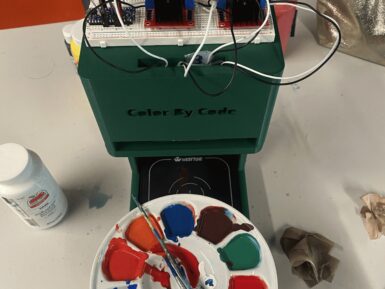
Overview
You can see the current oxygen concentration from reading the voltage values output proportional to the concentration of oxygen on the oxygen concentration linear characteristic graph. It’s suitable for detecting oxygen concentration in the environment. Grove - Gas Sensor(O2) is an organic reaction module and it provides a small current in relation to the amount of O2 in the air, hence we don’t need to provide an external power.
Features
- High-precision
- High sensitivity
- Wide linearity range
- Strong anti-interference ability
- Extraordinary reliability
Tech specs
Specification
|
Items |
Parameter |
|
Measurement Range |
0-25% |
|
Detect Life |
two years |
|
Sensitivity |
0.05~0.15 mA (in air) |
|
Temperature Range |
-20 oC~50 oC |
|
Preheat Time |
20 minutes |
Get Inspired

Control the air/fuel mixture for a better fuel economy of a engine with a Arduino Nano.

When you want to paint the walls in your bedroom that very specific shade of Misty Irish Green, all you have to do is head to your local hardware store and have them scan the corresponding card. The paint-mixing machine will then add the pigment to a white base and, a few minutes later, you have that exact color. So, shouldn’t you be able to do the same thing with acrylic paint for hobby purposes? Now you can, thanks to the “Color By Code” machine designed by Caltech students Frida Moreno and Asmat Kaur Taunque. Moreno and Taunque built Color By Code for a class project and it is, essentially, a hobby version of those hardware store paint-mixers intended for acrylic paint. As is the standard across many industries that deal with pigments, paint, and printing, this works using CMYK (cyan, magenta, yellow, key) color mixing. Here, the key is black and the machine takes an input color value for each component, then dispenses the paint in those ratios to achieve the desired hue. That all happens under the control of an Arduino Nano Every board. That operates peristaltic pumps, via L298N motor drivers, that dispense each color. Afterwards, a flushing procedure clears the lines before the next mix. The pumps fit into a 3D-printed stand, with the hoses dropping below to a waiting container. At this time, the user must set the color values through serial commands. But the team hopes to create a Bluetooth app in the future. They also plan to add a weight sensor, which would improve the machine’s accuracy.





